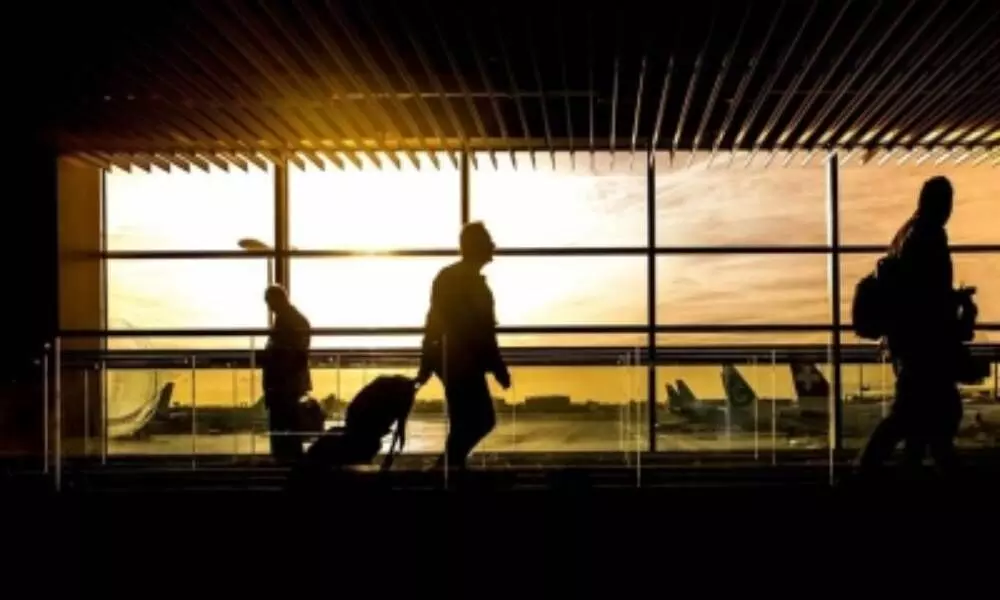For travel operators, second wave clogs rebound route, revenues to touch only 40% of pre-pandemic levels in FY22
The tours and travel industry, which was beginning to recover before the second wave of Covid-19 infections began, will now see revenue this fiscal reaching only 35%-40% of the pre-pandemic levels, ratings agency Crisil said on Wednesday.
image for illustrative purpose

Mumbai, June 23 The tours and travel industry, which was beginning to recover before the second wave of Covid-19 infections began, will now see revenue this fiscal reaching only 35%-40% of the pre-pandemic levels, ratings agency Crisil said on Wednesday.
While companies have raised capital last fiscal and will continue with cost-control measures to cut cash losses, a significant decline in travel, and continued uncertainty about the pandemic will weigh negatively on their credit profiles.
This is as per Crisil's study of three sector majors that account for over half of the domestic tours and travel industry, with a reported revenue of Rs 11,300 crore in fiscal 2020.
Tours and travel operators provide services such as air/bus ticketing, hotels/packages for both leisure and corporate travel within India and overseas. These companies saw their revenues plunge to Rs 2,300 crore last fiscal, which was only 20% of fiscal 2020 levels, after the nationwide lockdown and other restrictions led to a sharp reduction in travel.
The industry was brought to a standstill in the first quarter of last fiscal -- the peak travel season because of summer holidays -- which eroded revenue 95% on-year. However, fortunes started to mend gradually thereafter, with improving air traffic and demand for short domestic holidays lifting revenue to 55% of the pre-pandemic level by the fourth quarter.
Then the second wave set in. Under its impact, the first quarter of this fiscal is expected to be almost a washout once again, this time because of state-level lockdowns.
Says Manish Gupta, Senior Director, CRISIL Ratings, "With states beginning to ease restrictions and vaccination rates expected to improve, we see domestic travel picking up slowly from the second quarter. However, segments such as international holidays and inbound travel may see recovery only in the second half, and that too only if travel restrictions are eased in foreign countries."
"Also, with meetings and events shifting to the online mode, corporate travel is expected to remain under pressure. Overall, therefore, revenue this fiscal may reach only a little over a third of the pre-pandemic level."
To be sure, the industry was in the red even pre-pandemic, on account of high marketing and promotion expenses. Under additional pressure because of the pandemic, players cut their sales promotion expenses and other fixed costs by 45%-50%, which limited their cash burn last fiscal to around Rs 700 crore.
This fiscal, too, Crisil said that the industry is expected to post operating cash losses of around Rs 150-Rs 200 crore, though significantly lower than last year, with improved bookings and continued control of costs.
That said, travel operators have limited dependence on debt as their working capital cycle is typically negative because of high customer advances and creditors compared to low receivables. Further, companies raised capital last fiscal amid near-term uncertainties, which boosted their cash balance to over Rs 4,300 crore, against modest debt repayments of Rs 85 crore due this year.
Says Naveen Vaidyanathan, Associate Director, CRISIL Ratings, "The silver lining for the industry is people's fundamental urge to travel may not have diminished. Multiple European countries, including France, Italy and Spain, began opening up their borders over the last two months to bring back tourists. The United States is expected to soon follow suit. However, uncertainties continue in the Indian context, including an improvement in vaccination rates, opening up of international borders for Indian travellers, and how corporate travel actually shapes up in the post-pandemic world. These uncertainties, along with continued losses, drive our negative outlook on the sector - and are also key monitorables."

